Insulation of steel gas pipelines: materials for insulation and methods of their application
Are you planning to gasify your house or modernize your gas supply? A gas pipeline is one of the most valuable and dangerous communications, so its reliable protection is extremely important.
Agree, damage to a gas pipe and the leakage of this fuel can go unnoticed for quite a long time, and then lead to the most disastrous consequences. It’s better to study everything carefully in advance and play it safe when arranging protection, right?
If you are interested in the insulation of steel gas pipelines, in this article you will get answers to the following questions: why is it needed, what is it, in what cases and how each type of insulating material is used, how to check the quality of the coating. We will mention all types of gas pipelines: from main pipelines to low-pressure pipes, from aboveground to underwater, and we will answer all questions that arise.
The content of the article:
Gas pipeline insulation functions
Today, almost every building in every locality is connected to the gas pipeline; it is difficult to imagine the life of a modern person without blue fuel. Just imagine how many pipes are needed to implement such a supply network!
They stretch above our heads, under our feet, deep in the earth, and even along the seabed.Every centimeter of this gas web must be reliably protected and absolutely safe, because a leak can lead to a large-scale accident, with destruction and sometimes casualties.
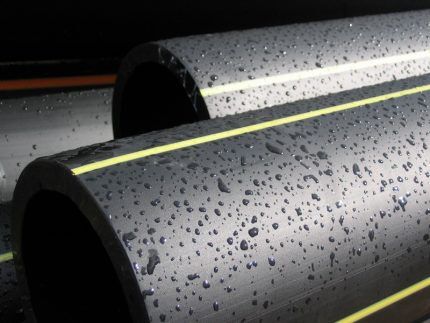
Polyethylene gas pipelines do not need additional protection, but they cannot be used everywhere, and replacement is expensive, so most gas pipes are made of steel.
To prevent steel from rusting and deteriorating, it is treated with special compounds and materials that isolate its surface from the environment. The main functions of such coatings are protection from moisture, chemical influences, mechanical influences, as well as dielectric protection.
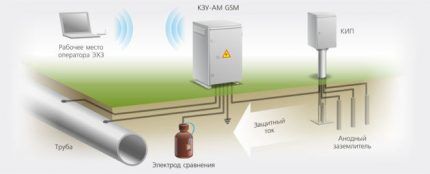
In addition to the coating, for reliable protection from stray and direct currents, underground gas pipelines are equipped with electrochemical cathodic protection, which ensures the removal of these charges through a special conductor to the drainage substation.
For an above-ground pipeline, the protection is less solid, because it is easier to update, and the pipes are exposed only to atmospheric moisture, drying out regularly. For offshore gas pipelines, on the contrary, in addition to reliable protection from an aggressive environment, an additional layer of weighting is required so that the pipe lies motionless on the bottom, under the waves.
Regulatory documents and their requirements
There are 3 main documents regulating the organization of gas pipeline protection. RD 153-39.4-091-01 “Instructions for protecting urban underground pipelines from corrosion.” As the name implies, it does not apply to the insulation of gas pipes with a diameter greater than 83 cm - intercity and international, as well as to pipes laid above ground or under water.
GOST 9.602-89 – a related document that contains all the standards and calculations for the protection of underground gas pipelines. If the instructions explain how and what to make insulation from, then GOST indicates how much of what will be required - from meters of material and tools to equipment and labor hours of workers.
GOST R 51164-98 Main steel pipelines. General requirements for corrosion protection. This standard fills a gap in the Instructions regarding main pipelines. Their protection must be especially reliable and has its own specifics, therefore the rules for its organization are included in a separate document.
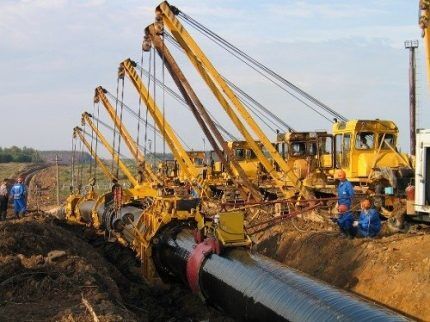
These documents regulate the following issues:
- what types of materials are allowed to be used on this type of gas pipeline under these conditions;
- how much reinforced insulation is needed, is electrochemical protection needed;
- who and when is obliged to provide the gas pipeline with the necessary protection;
- technology for applying insulation at the factory and in the field, as well as for repairing damage;
- norms for the consumption of materials and costs of other resources for carrying out work;
- the procedure for checking the quality of the coating and standards for quality indicators for all parameters for each type of insulation.
Thus, these documents describe the entire process of pipe insulation step by step, from release at the factory to inspection after installation and during operation. There is no room left for creativity, because these are security issues.
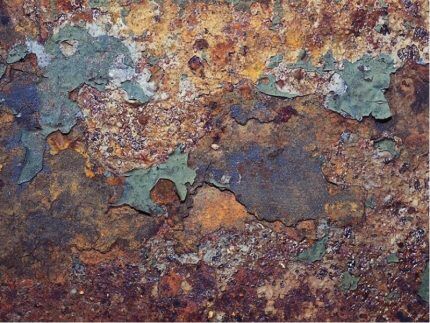
There are also separate lists that list all the recommended materials and manufacturers of insulation for gas pipelines.
Considering the complexity of the work and the considerable number of standards that must be observed, do not even expect to cope with the insulation of the gas pipeline yourself, and the gas service will not accept work performed by a third-party specialist.
Types of insulation materials
Based on operating conditions and ease of use, there are many types of coatings for insulating gas pipes. It is enough to protect above-ground gas pipelines with 2 layers of primer and 2 layers of paint or enamel.
Pipes that will serve on the seabed are covered with a layer of concrete on top of the main insulation for weight and additional protection.
Next we will talk about means of protecting underground steel pipes.
Polymer protective coatings
Extruded polyethylene – the most progressive and universal protection. It is used on pipes with a diameter of 57 – 2020 mm, it sticks tightly, forms a perfectly uniform continuous layer, protects against temperature and mechanical influences, and is also convenient to use.
In such a coating, a steel pipe is practically not inferior in terms of protection characteristics to its polymer analogues. This protection consists of only 2 layers - a rigid adhesive and, in fact, polyethylene.Despite this, such a highly reinforced coating on large diameter pipes can reach 3.5 mm.
Extruded polypropylene is specific for its high mechanical strength: with it you can pull pipes through wells, for closed installation methods, and not worry that the insulation will be damaged due to friction or snagging on stones and soil. Externally and in structure, this type of insulation does not differ from polyethylene, only 0.3 - 0.5 mm thinner.
Polymer adhesive tapes There are polyethylene and polyvinyl chloride, with the former being preferable because they stick 4 times stronger and protect the pipes better. Most often, adhesive PET tapes are used to repair and insulate joints of pipes coated with extruded polyethylene, but there are also pipes wrapped with them at the factory along the entire length.
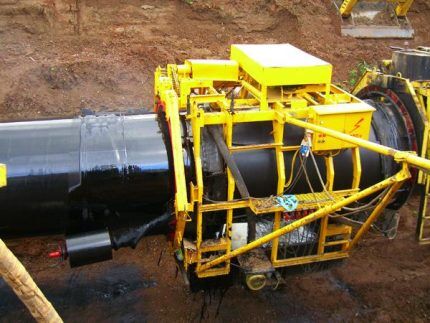
There is also a combined PET coating, in which the primed pipe is first wrapped with adhesive polymer tape and protected on top of it with a layer of extruded polyethylene. It is used on pipes with a diameter of up to 53 cm, and the total thickness does not exceed 3 mm.
Insulation based on bitumen mastics
This insulation differs fundamentally in composition and properties, primarily in the method of application. The adhesion of bitumen both to the pipe and the layers to each other is ensured by heating and melting of the material itself, and not by an adhesive primer, as is the case with PET.
This coating is applied to a special bitumen primer and consists of 2-3 layers of mastic, each of which is reinforced, and an outer protective paper wrapper.As a result, a continuous coating is formed that completely follows the shape of the pipe, where the reinforcing fiberglass or mesh is as if soldered into the thickness of the protection.
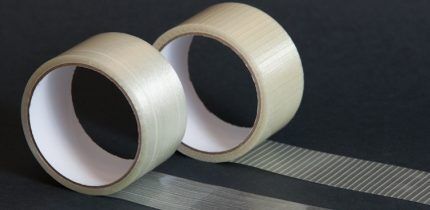
The mastic itself, in addition to bitumen, contains various inclusions - polymer, mineral or rubber - providing different properties of the material. Modifying additives and plasticizers are also added to it, which add elasticity, flexibility, resistance to critical temperatures and durability to the natural hydrophobicity and adhesion ability.
There are also tapes that connect bitumen as an adhesive and special polymer tapes. The main 2 types of such coatings are: PALT, with heat-shrinkable tape, and LITKOR, from polymer-bitumen tape. The latter, in particular, is necessary to protect connections between pipes with different types of insulation.
Materials for insulating small elements
Base terminals, corners, elbows, condensate collectors and other shaped elements of gas pipelines also need protection.
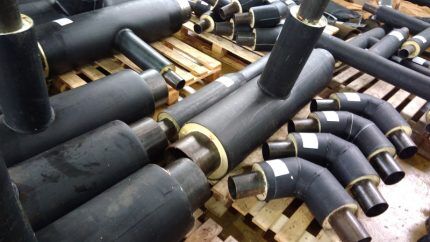
There are special coatings for this: PAP-M105 And Polur. The first is two layers of cured polyester resin reinforced with glass fiber.
Semi-lure consists mainly of polyurethane, supplemented with technological additives and divided into a main component and a hardener.With the help of these two compounds, shaped joints are insulated both at the factory, in workshops, and directly on the route.
How is insulation applied?
The main part of the insulation is applied to gas pipes, and often on shaped parts of a gas pipeline, in the factory, even at the stage of their production. However, when installing a pipeline, it becomes necessary to insulate the joints, which is carried out under route conditions - that is, directly at the installation site.
In addition, in the field, the same materials are used to repair the protective coating if no more than 10% is damaged, and occasionally even to completely re-insulate a separate area. The tanks are also insulated manually, directly on the route.
If possible, welds and fittings are insulated with the same coating as the main pipe - or as similar as possible.
Work on gas pipeline insulation is possible at temperatures above -25 °C, and for polymer adhesive tapes - above +10 °C. If it rains or snows, there must be a reliable canopy over the work site, which will make it impossible for precipitation to fall on the insulated surface.
On overhead gas pipeline pipes
This type of gas pipeline is located in the least aggressive environment, and therefore the risk of rust is significantly reduced. In addition, damage to it is much easier to notice and repair, so overhead gas pipelines do not require insulation as such.
To protect against precipitation and atmospheric moisture, according to the standards, a coating of 2 layers of primer and 2 layers of paint, enamel or varnish is sufficient.

However, in the case of difficult operating conditions, thermal insulation of gas pipelines is used - greases, glass-enamel coatings, as well as aluminum or zinc casings, which should not touch the pipe itself.
Insulation of underground gas pipelines
In the ground, pipes are constantly exposed to moisture, and often to chemical compounds and stray currents. All this can lead to metal corrosion and gas leakage, so they try to ensure insulation as reliably as possible.
Each underground steel gas pipeline is doubly protected: passively - by an insulating coating on the pipe, and actively - through drainage or current suppression by cathodic protection.
Most of the materials that we talked about earlier can be used both for basic, factory insulation, and on the highway. We will talk about the main stages and subtleties of such work below.
Polyethylene and polypropylene insulation is produced at the plant in several stages:
- Drying pipes.
- Shot cleaning to a metallic shine.
- Heating of pipes.
- Applying an adhesive base to a rotating pipe.
- Application by extrusion, stocking or tape winding of a polyethylene layer.
- Sealing with a special roller with a fluoroplastic shell.
- Water cooling to 70 – 80 °C.
- Quality control of the resulting coating.
All processes are fully automated, because computer accuracy is the key to product quality.

In field conditions, all stages must be preserved, but are implemented using portable equipment - grinders and sandblast cleaners, gas-burners and blowtorches.In addition, there are special kits of materials for insulating joints and repairing damage - for example, heat-shrinkable PET sleeve or adhesive polymer tape.
To apply bitumen insulation, pipes are also cleaned, but with the help of metal brushes, leaving a clean, but not smooth surface. A primer consisting of bitumen and gasoline is poured onto cleaned pipes and rubbed with towels, and in highway conditions - with rags or brushes.
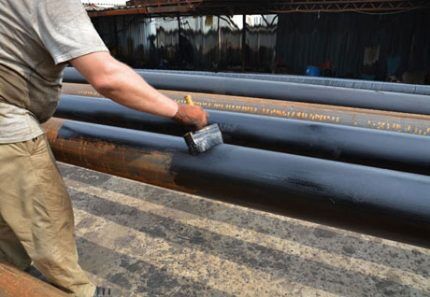
No more than a day later, it is necessary to apply the main coating: 2-3 layers of mastic, separated by reinforcing material and protected on the outside by a layer of paper.
For reinforcement, fiberglass, non-woven polymer fabric or mesh are used. They are wound spirally, evenly, with slight tension and overlap.
Application of insulation in the field
If it is necessary to repair damage to the insulation of an underground gas pipeline, or to connect pipes with different types of insulation, it is important to choose the right materials to use.
PALT and LITKOR coatings are used only in highway conditions. Both are applied to a bitumen primer, but for the first it is necessary to first apply a layer of bitumen and reinforce it, and then wind the tape directly onto the hot mastic. In the second case, bitumen is the bottom layer of the tape itself, so it is wound directly onto the primer, having previously been melted with a burner.
Despite the external similarity, Litkor tapes should not be confused with adhesive PET tapes, because the use of an inappropriate primer will hopelessly ruin the quality of the insulation.
Repair pipes with extrusion PET coating using special heat-shrinkable patches or LITKOR bitumen-polymer tapes. When factory coated with adhesive PET tape, the same tape is used for repairs, such as Polylene. This is only possible in the warm season, because the tape does not stick in the cold and does not tolerate fusing.
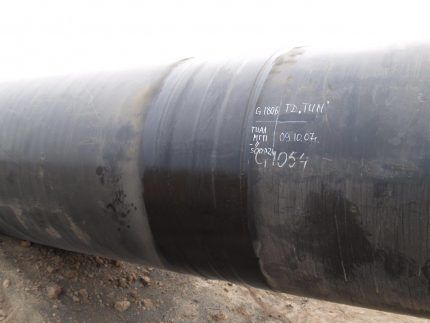
The bitumen coating is repaired with the same bitumen mastics with reinforcement, bitumen-polymer tapes LITKOR or similar rolled material Isoplast-P.
You can always connect different pipes in absolutely any combination with LITKOR tapes, and if there is no bitumen in the native coating of both pipes, then direct connections can also be insulated with Polylen adhesive tapes.
Underwater pipe insulation
Gas pipelines that will serve on the seabed are insulated especially carefully, because this environment is dangerous due to both chemical and mechanical damage, and interruptions in the operation of the pipe, as a rule, indicate interruptions in international gas supplies.
The main part of the pipe protection is received at the factory. After cleaning and drying, they are opened with an epoxy compound, then an adhesive is applied, and a polyethylene layer is applied over it. At this stage, the pipes are similar to similar land pipes, except for the first epoxy layer, which is duplicated on the inner surface.
However, that’s not all: cathodic protection is installed on the prepared pipes at the factory, and then a reinforcement frame is constructed and an outer concrete layer is poured, often with iron ore as a filler.
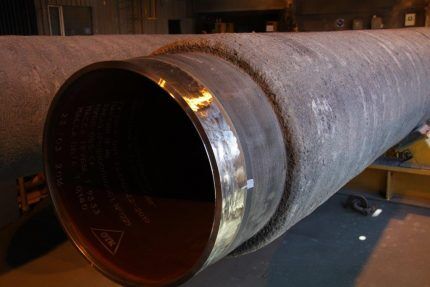
As a result of such multi-layer finishing, the weight is 1 m.p. pipes can reach 2 tons. Transporting such tubes is very problematic, so they are not made too long, and for every kilometer of an offshore gas pipeline there are several dozen welds, each of which must be reliably insulated.
The connection and insulation of joints takes place on a special barge equipped with everything necessary. Here the pipes are welded, the seam is thoroughly cleaned using a shot blasting machine. Main pipes They have a huge diameter, so they are heated with induction rather than propane burners - it turns out faster, more uniformly and safer.
Then the primer is applied and a shrink sleeve is installed, secured with a locking plate. The cuff is first heated in the middle, along the weld seam, and then gradually shrinks with the help of gas burners, from the center to the edges. After quality control of this stage, a lining casing is installed for pouring polyurethane foam. After it dries, the pipe is lowered to the bottom and covered with crushed stone.
Checking the quality of insulation application
The protection of steel gas pipelines is a responsible undertaking, therefore, each operation performed is subject to thorough inspection, with the drawing up of a report of hidden work performed and entering them into the pipeline passport. No matter how high-quality and correctly selected the insulation material is, it will not cope with the functions assigned to it if the technology for carrying out the work has been violated.
The main parameters of the finished coating to be checked are thickness, continuity and adhesion to the pipe.They are measured with special electronic devices: thickness gauges, spark flaw detectors and adhesive meters, respectively. They do not damage the coating, so they allow you to control all questionable points without extra costs.
In factory conditions
At factories and production bases, the thickness of the coating is checked on 10% of the pipes of each batch, in 4 places on different sides in a circle on each pipe, as well as in questionable areas.
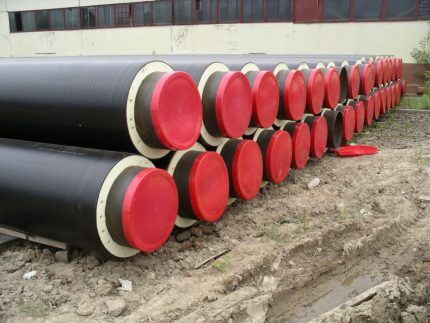
Adhesion, or the force of adhesion to metal and between layers, is also required by standards to be checked for 10% of the products in a batch or every 100 m.
The continuity of the coating, that is, the absence of punctures, scuffing and other through violations, is checked on all insulated products over the entire area.
In addition, dielectric continuity of the coating, impact strength, peel area after cathodic polarization and other tests can be checked. When insulating with bitumen coatings, a sample for physical properties is taken from each batch of mastic, at least daily.
At the installation or repair site
Under route conditions, the quality of insulation is also checked, for continuity - always and completely, and for thickness and adhesion - every 10th insulated weld.
In addition, the width of the overlap on the factory coating is checked, as well as the insulation relief - for the absence of corrugations, wrinkles, air cushions and other defects.
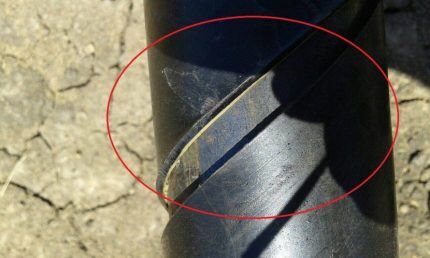
In addition, the continuity of insulation on existing gas pipelines is regularly checked. To do this, you don’t even need to dig them up, and if damage is suspected, the pipes are exposed and not only the thickness, continuity and adhesion are checked, but also the dielectric properties of the insulation.
Conclusions and useful video on the topic
Now you know everything - or almost everything - about the purpose and materials for insulating various steel gas pipelines, and also have an idea about the features of their application and checking the quality of protection.
And for greater clarity, we suggest watching a video that describes in detail how to insulate welded joints with bitumen-polymer tape:
Installing a heat-shrinkable sleeve on a weld seam:
Perhaps you have already encountered similar work, observed its implementation or took direct part. Please add or evaluate the information provided. We'd love to hear your thoughts in the discussion below.



